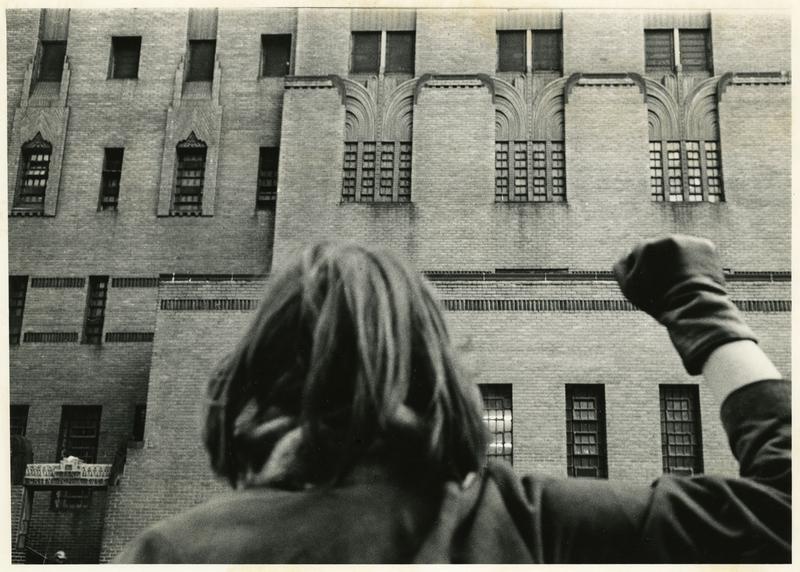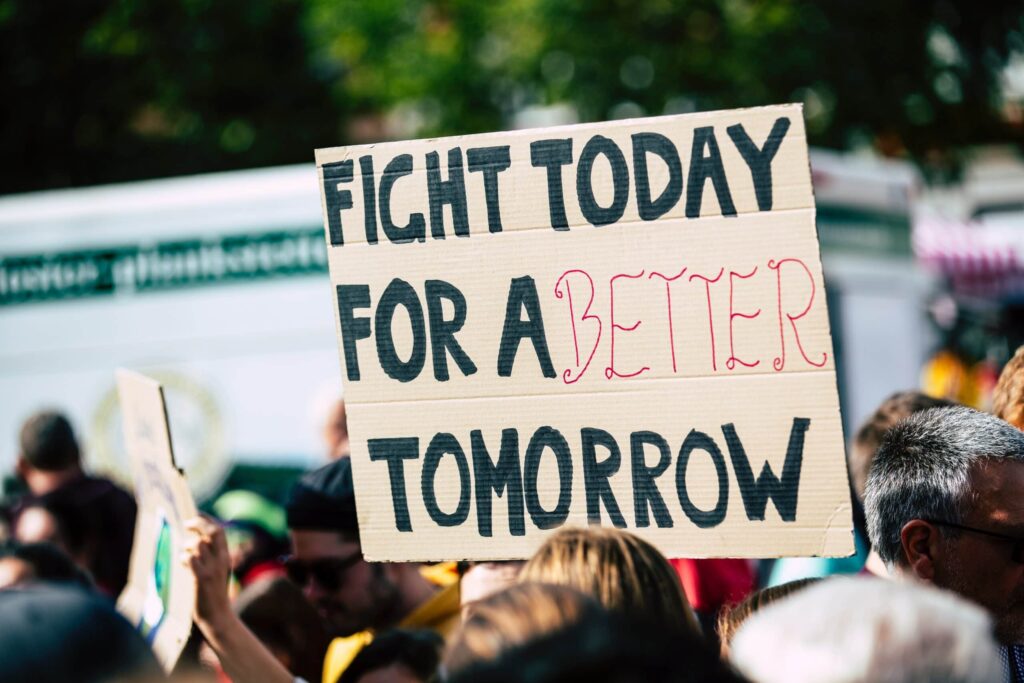Nestled in Greenwich Village’s storied streets, the Women’s House of Detention stands as a poignant symbol of LGBTQ+ history and activism. My journey into uncovering this hidden past began with a deep dive into the book The Women’s House of Detention, Hugh Ryan’s multiyear research project based on archival records, personal interviews, and firsthand accounts. This structure, operational from 1929 to 1974, was more than a prison; it was a crucible where the struggles and resilience of queer women and trans individuals intersected with societal norms, igniting sparks for change. In exploring the corridors of this forgotten institution, we find not just stories of oppression, but narratives of liberation and identity formation that resonate deeply within the LGBTQ+ community. Join me as we journey through the echoes of this bygone era, uncovering a narrative that demands recognition and respect.
The Historical Significance of Women’s House of Detention
The Women’s House of Detention, located in the heart of New York City’s Greenwich Village, stands as a notable yet often overlooked landmark in LGBTQ+ history. Originally opened in 1929, this facility represented a significant departure from earlier women’s prisons. It was built with a reformist vision, aiming to offer better conditions than its predecessors. However, as time passed, it became evident that the institution was failing in its reformist goals.
The Role of Women’s House of Detention in LGBTQ+ Activism
The prison’s location in Greenwich Village, a burgeoning center for the LGBTQ+ community and activism, played a crucial role in its transformation into a hub of queer resistance. The neighborhood was already becoming a sanctuary for LGBTQ+ individuals during the mid-20th century, a time when societal norms were heavily against them. This proximity meant that many LGBTQ+ individuals, particularly lesbian and transgender women, were incarcerated in the Women’s House of Detention for offenses related to their identity or expression, such as loitering or cross-dressing, which were deemed criminal activities at the time.
Inside the detention center, these women faced harsh conditions, including overcrowding, poor sanitation, and abuse from both staff and fellow inmates. Despite these adversities, or perhaps because of them, the Women’s House of Detention became a site of solidarity and defiance. The shared experiences of injustice and discrimination fostered a sense of community among the incarcerated LGBTQ+ individuals. They began to organize, share their stories, and form alliances that extended beyond the prison walls.
External to the prison, the LGBTQ+ community and allies rallied in response to the injustices occurring within the detention center. Protests and advocacy efforts became more frequent and visible, drawing public attention to the plight of the incarcerated individuals. These activities contributed significantly to the burgeoning LGBTQ+ rights movement, highlighting the systemic injustices faced by this community.
As a result, the Women’s House of Detention occupies a unique place in LGBTQ+ history. It serves as a stark reminder of the oppressive conditions faced by queer individuals in the past, while also symbolizing the resilience and activism that grew from such adversity. The legacy of this institution is a testament to the enduring spirit of resistance within the LGBTQ+ community, a spirit that continues to inspire and fuel the fight for equality and justice.
Lesbian + sapphic history is often lost
Ryan notes how challenging researching Queer Women’s History can be because historical narratives often neglect or deliberately omit these stories. Still, through painstaking efforts and thorough research, the forgotten prison has been brought back into public memory.
The Women’s House of Detention thus holds a special place in lesbian & LGBTQIA+ activism history—its legacy continues to influence contemporary discourse on gender identity, sexual orientations and the need for fair treatment of all incarcerated people.
Notable Inmates at Women’s House of Detention
The Women’s House of Detention, a former prison in New York City’s Greenwich Village, played a pivotal role in the lives and activism of several notable figures, including Afeni Shakur, Angela Davis, and Andrea Dworkin. Their time within its walls profoundly influenced their future paths and contributions to social justice movements.
Afeni Shakur: A member of the Black Panther Party, Afeni Shakur’s incarceration in the Women’s House was a transformative experience. The harsh conditions and systemic injustices she faced there deepened her understanding of racial and gender oppression, fueling her activism for racial equality and women’s rights. Her experiences shaped her approach to activism, emphasizing the need for systemic change, and informed her role as an educator and mentor within the Black Panther Party.
Angela Davis: An academic and iconic figure in civil rights activism, Angela Davis’s time at the detention center brought her face to face with the intersectionality of race, gender, and class injustices. This experience solidified her advocacy for prison reform and social justice. Witnessing firsthand the struggles and mistreatment of other inmates, particularly women of color, Davis became a staunch critic of the prison-industrial complex and a leading voice for marginalized communities.
Andrea Dworkin : A renowned feminist writer, Andrea Dworkin’s brief incarceration at the Women’s House of Detention was a critical moment in her life. It served as a catalyst for her fervent advocacy for women’s rights. Dworkin’s experiences within the prison system exposed her to the brutal realities faced by incarcerated women, shaping her radical feminist ideology and her vocal opposition to violence against women.
Each of these individuals used their experiences at the Women’s House of Detention as a platform to challenge oppressive systems and advocate for social change. Their personal stories highlight the facility’s role in shaping the trajectory of their activism, serving as a reminder of how environments of oppression can also become breeding grounds for resistance and transformative leadership.
The existence of queer identities within the prison system is a topic that requires an open mind. Interestingly, research reveals that 1 in 3 women in prison identify as lesbian or bisexual. This introduces us to a phenomenon often referred to as “gay for the stay”.
The Prevalence of Same-Sex Relationships in Prisons
The Women’s House of Detention and the stories found within present a complex tableau of queer identity and sexuality. Within its walls, the phenomenon of ‘gay for the stay’ was not just a survival strategy but a nuanced exploration of queer identity under duress. This term, often simplistically used to describe temporary same-sex relationships in prison, belied deeper layers of emotional connection and self-discovery for many inmates. In an environment where conventional social structures were upended, these relationships offered solace and a rare space for genuine self-expression.
However, this environment also bred biphobia, a stark reminder of the prejudices that can permeate even marginalized communities. Bisexual women in the detention center often faced skepticism and exclusion from both their heterosexual and homosexual peers. This biphobia, both a product of and a contributor to the stigmatization of bisexuality, reflected broader societal attitudes. It underscored the need for a more inclusive understanding of queer identities, one that acknowledges and respects bisexuality as a legitimate orientation.
The experiences at the Women’s House of Detention provide critical insights into the complexities of queer identity and relationships in confined spaces. They highlight the fluidity of sexual orientation, challenging rigid labels, and the importance of creating inclusive spaces that acknowledge and embrace this diversity. The stories that emerged from this detention center are not just historical footnotes; they are powerful narratives that contribute to our understanding of queer identities and the ongoing struggle for acceptance and equality within and beyond the LGBTQ+ community.
The policing of same-sex affection is a stark reality for queer people in women’s prisons. This harsh treatment, fueled by homophobia, leads to unjust punishment.
Queering women’s prisons
The Women’s House of Detention, emblematic of the broader prison system, was a battleground where institutional bigotry against LGBTQ+ individuals, particularly homophobia and transphobia, was rampant. These biases were not just individual attitudes but were embedded in the policies and practices of the prison. LGBTQ+ inmates faced systemic discrimination, including segregation and harsher punishments. The impact of these practices extended beyond the prison walls, reinforcing societal stigmas and complicating reintegration into society post-release.
For instance, a study by the National Center for Transgender Equality reveals that transgender people are often placed in facilities based on their sex assigned at birth, leading to higher risks of abuse and mental health issues. This practice, reflective of the broader systemic issues within prisons, was prevalent in the Women’s House of Detention as well. Trans folks would often be shuffled between jails and prisons depending on what gender was assigned at birth or assumed by the legal system.
The narratives from this institution serve as a stark reminder of the ongoing struggles against institutional bigotry within the prison system. They highlight the urgent need for abolition and for adopting more inclusive and humane policies. These stories, while rooted in the past, continue to resonate with current discussions around prison “reform” and LGBTQ+ rights.
For further reading on the experiences of LGBTQ+ individuals in the prison system, I recommend the following sources:
Prison Policy Initiative: This resource provides an overview of the unequal treatment of LGBTQ people in the criminal justice system, highlighting the overrepresentation of gay, lesbian, and bisexual individuals in prisons and jails, especially lesbian and bisexual women.
The Sentencing Project: Their brief examines the criminalization and over-incarceration of LGBTQ+ people in the United States. It addresses the drivers of overrepresentation and presents recommendations for reform, focusing on issues like incarceration, gender justice, youth justice, and sentencing reform.
Justia: This source discusses the specific challenges faced by transgender prisoners and LGBTQ+ prisoners with HIV, including difficulties in obtaining adequate healthcare and issues faced when reporting hate crimes.
The Crime Report: This study highlights that LGBTQ individuals, particularly transgender people, experience higher levels of harassment and abuse in prisons, often perpetrated by fellow inmates and sometimes by prison staff.
Remember that many sources will show biases in favor of the prison industrial system, especially as getting data out of the system can be a challenge for researchers who are public about supporting queer liberation.






